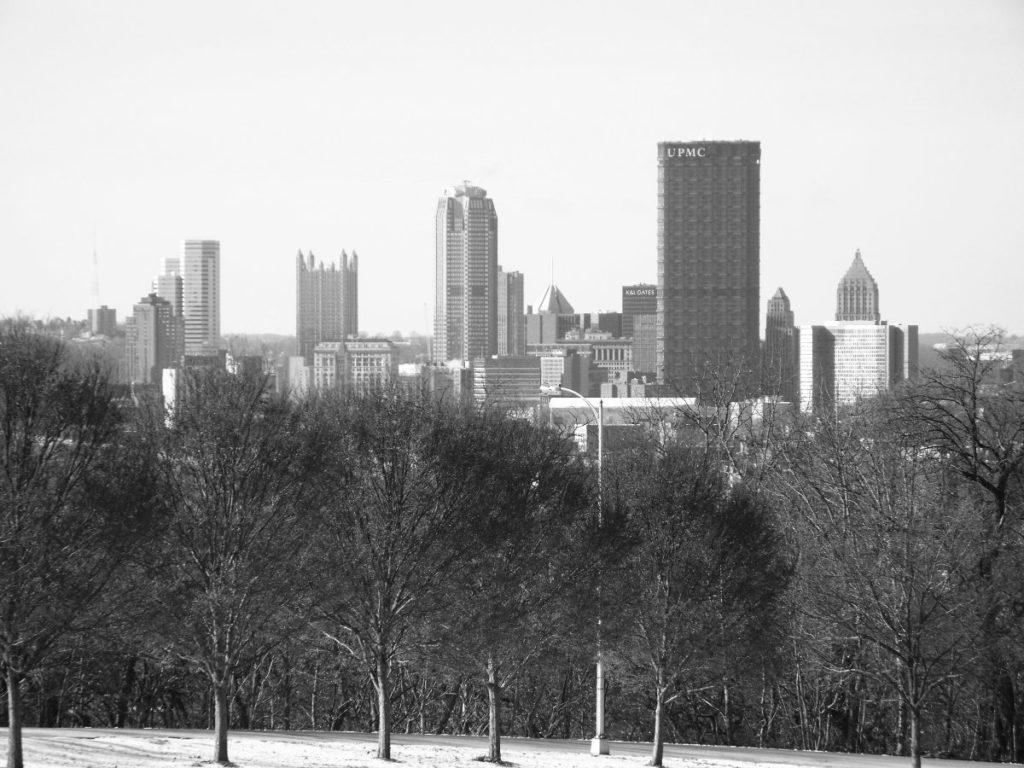Gateway Center seen from the Gateway subway station.
-
Gateway Center from the Subway
-
St. Michael’s Cemetery
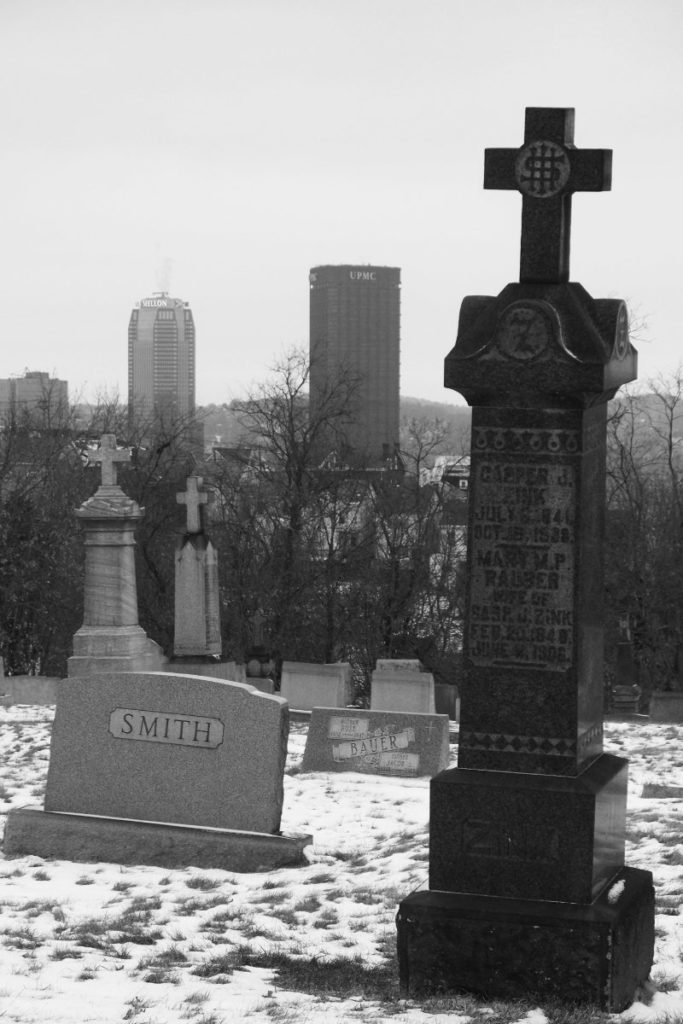
Downtown skyscrapers viewed from St. Michael’s Cemetery on the South Side Slopes. This picture is only as metaphorical as you want it to be.
-
View from Schenley Park
-
EQT Plaza (CNG Tower)
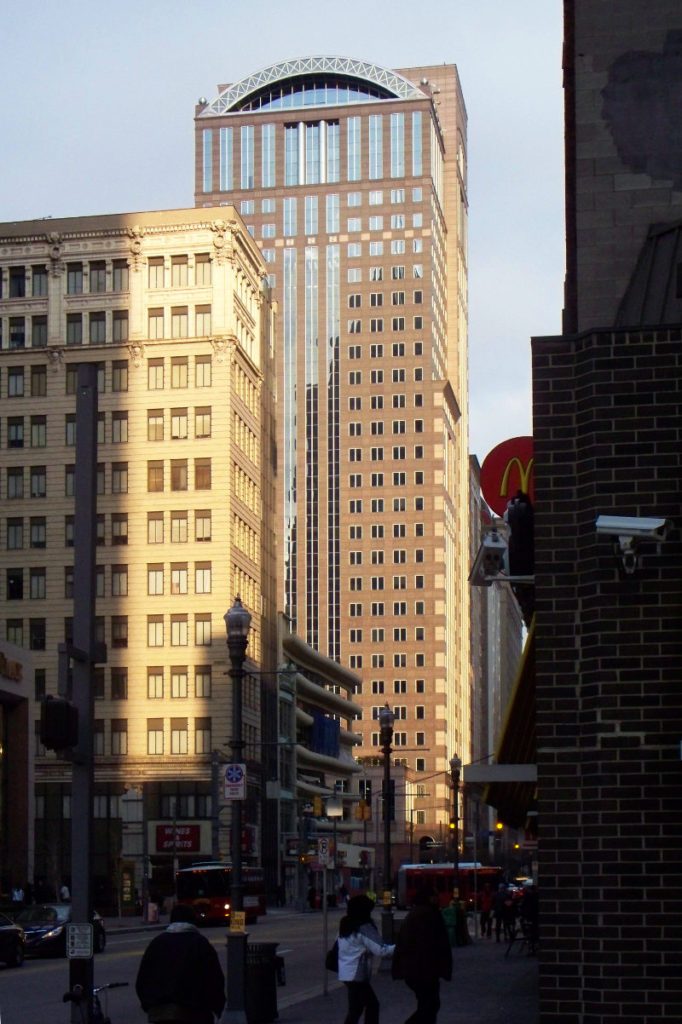
The skyscraper boom of the 1980s gave us some remarkable buildings, among which PPG Place instantly secured a place as the locals’ favorite skyscraper. Old Pa Pitt has nothing to say against PPG Place, but if you asked him which of the 1980s skyscrapers was his favorite, he might (depending on the day, the hour, the lighting conditions, and so on) tell you it was this one. Like the best Art Deco skyscrapers (and indeed we find it in Wikipedia’s category “Art Deco architecture in Pennsylvania“), it is bold and subtle at the same time, playing with references to downtown Pittsburgh’s most famous landmarks.
Designed by Kohn Pedersen Fox, a firm that has since grown into quite a big deal in the world, this building fits extraordinarily well with its urban environment. It presents very different faces from different directions, and yet the whole is entirely harmonious.
EQT Plaza is just across the street from the Wood Street subway station.
-
One Oxford Centre
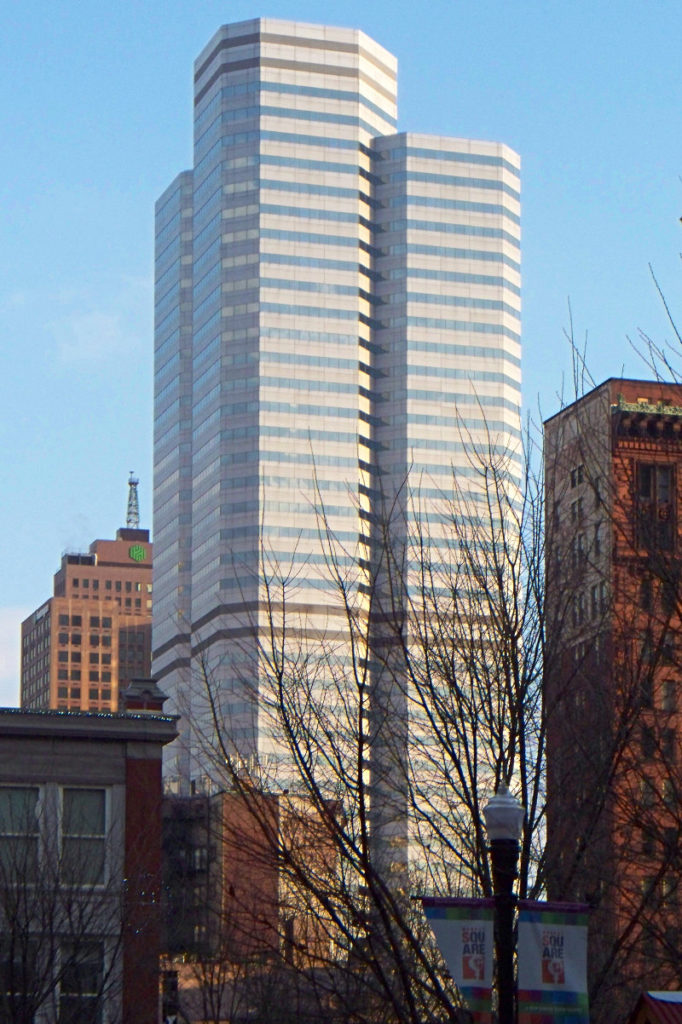
Spelled “Centre” because the conventional wisdom in the real-estate business holds that you can raise the rents if you use a British spelling. Here we see it from the Diamond. This nest of octagons is, depending on how you measure it, our fifth-tallest building, one foot shorter than Fifth Avenue Place. The top, however, is higher than the top of Fifth Avenue Place or even PPG Place (our third-tallest), because downtown slopes upward toward Grant Street, so One Oxford Centre is built on higher ground.
The first few floors of this building are a shopping arcade connected by a meandering skywalk to the Kaufmann’s (now Macy’s) department store a few blocks away
One Oxford Centre is a short walk from either the Steel Plaza or the First Avenue subway station.
-
U. S. Steel Tower and BNY Mellon Center
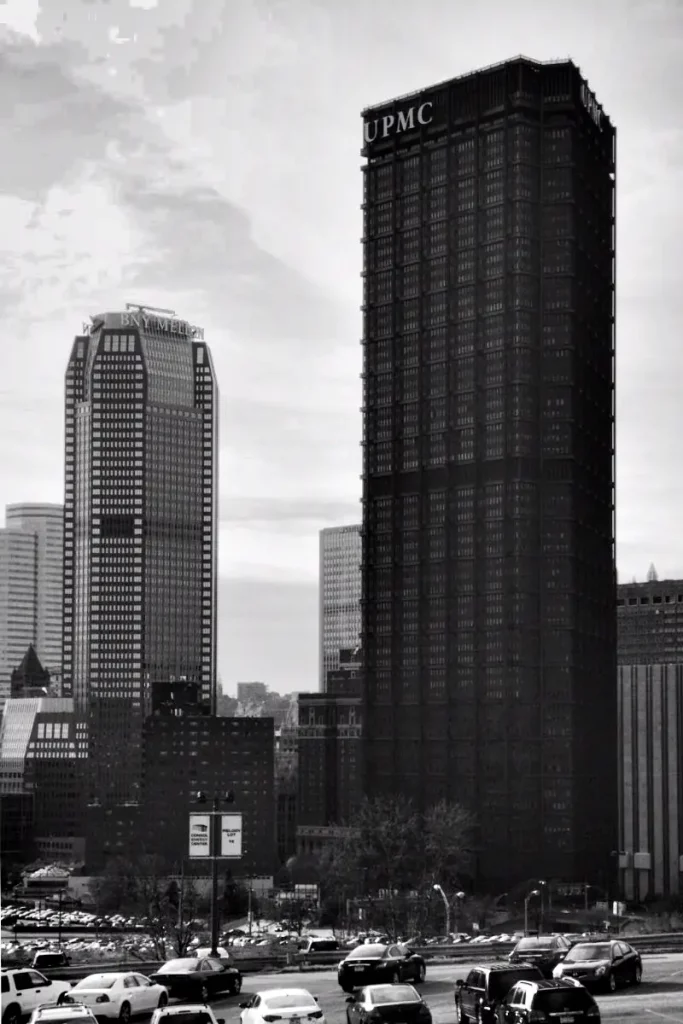
The tallest and second-tallest buildings in Pittsburgh.
Whatever one thinks of its design, the U. S. Steel tower dominates Pittsburgh in a way few cities are dominated by a single building. For some time after it was built in 1970, it was the tallest building outside New York and Chicago. At 841 feet tall, it’s a little more than two-thirds the height of the Empire State Building, so it was never the tallest thing in the world. But it is massive in a way no other skyscraper quite matches.
Most tall skyscrapers taper: this one goes straight up without interruption. The lobby covers an entire acre on the ground, and the roof covers an entire acre as well. No other building in the world has a roof as big as this as high as this, and there is more floor space in this building than in the Empire State Building. The three sides of the building (the floor plan is a triangle) are so enormous that the lights in the windows, controlled by a central computer, are sometimes used as a gigantic dot-matrix display, especially when a local sports team has had some notable success.
The U. S. Steel company had, in fact, seriously considered the idea of building the tallest skyscraper in the world here, but eventually settled for this massive hulk. It’s made of a kind of steel called Cor-Ten, of which the company was very proud: as it rusts, it gains strength. (The unforeseen side effect was that the sidewalk on Grant Street turned rusty for half a block in either direction.) The whole point of the thing is to say “STEEL” in a voice that can be heard fifty miles away. As a feat of engineering, it’s quite impressive; as architecture, it resembles nothing so much as the black monolith from 2001: A Space Odyssey. The lobby, however, is wonderfully dramatic, with the vertical lines of the massive structure above beginning their flight upward as impossibly slender columns of steel.
UPMC, a nonprofit medical conglomerate, bought the signage rights in order to fulfill its charitable mission more efficiently.
A kind of underground civilization of meandering tunnels lined with fast-food joints connects these two buildings and the Steel Plaza subway station beneath them.
This view from Crawford Street was opened up by the demolition of the old Civic Arena.
-
BNY Mellon Center
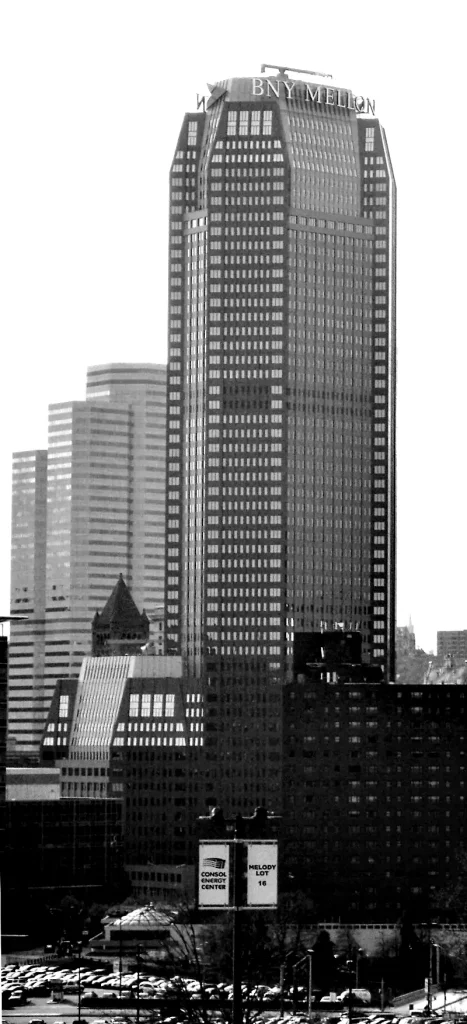
Our second-tallest building, this octagonal tower was planned to be the headquarters of Dravo Steel, but was sold to Mellon Bank while still under construction; thus its original name “One Mellon Center.” When the mad boom of the 1980s ended, plans for smaller matching buildings next to it were gradually abandoned.
-
Arrott Building
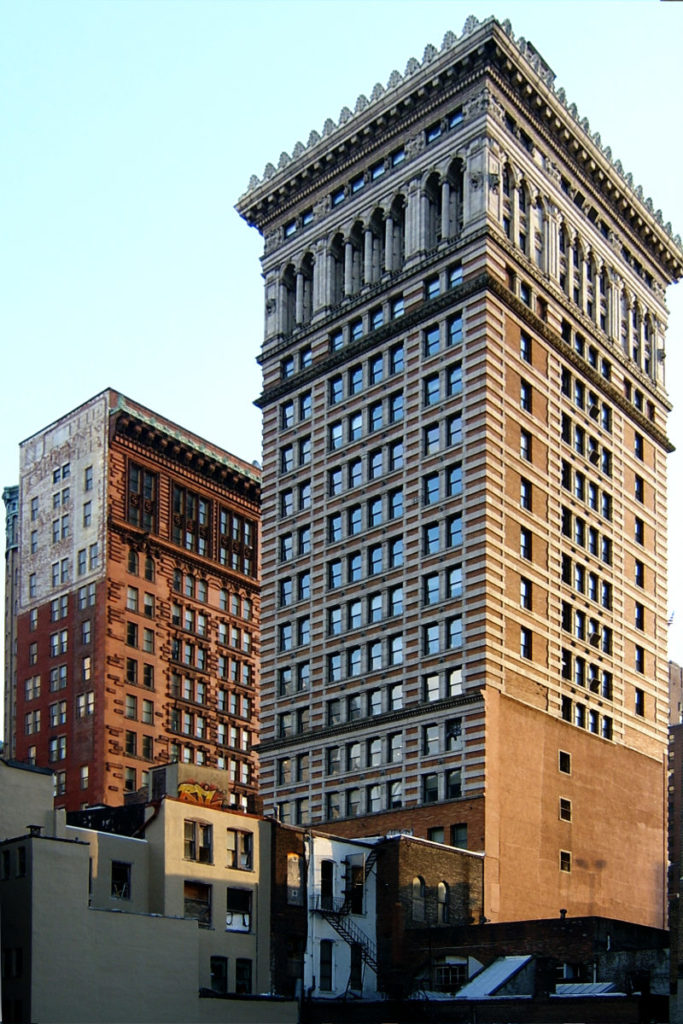
The Arrott Building, designed by Frederick Osterling, is the most ornate of the famous Fourth Avenue towers. (The interior is as impressive as the exterior.) This view of the back is possible because of the temporary vacancy of a lot on Forbes Avenue, where a new skyscraper is going up. Behind and to the left, we see the People’s Savings Bank tower by Alden & Harlow with its curious rusticated stone in the kind of random patterns cartoonists use to suggest a brick wall without actually having to draw all those bricks.
-
Gateway Center

Two of the three original Gateway Center towers, designed by Eggers & Higgins as a model for urban redevelopment after the Second World War. (In the picture above, the entrance to the Gateway subway station is in front.) They were meant to be clad with ordinary brick, and they would have been ugly excrescences; but for various reasons they ended up with these gleaming chrome walls instead, creating a constantly shifting play of light all day. “Towers in a park” was the International Style ideal of a city; it was usually a miserable failure when actually built, but many of the miserable failures were inspired by this conspicuous success, which was one of the most talked-about building projects of the postwar era.

-
Oliver Building
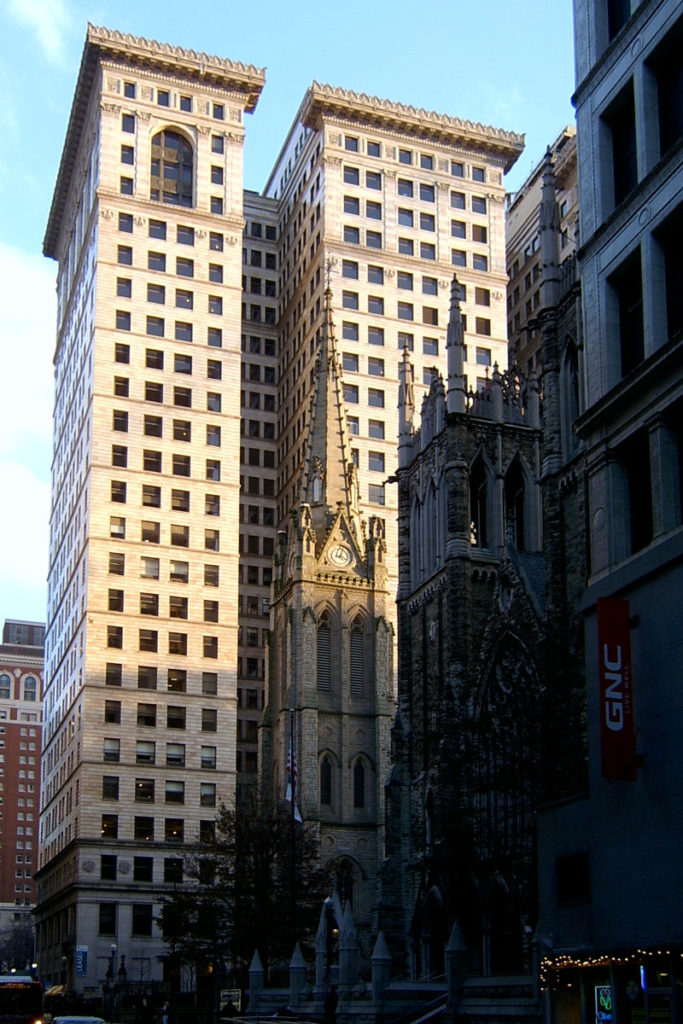
The back of Daniel Burnham’s Oliver Building gleams in the late-afternoon November sun. For some time after it was built, this was the tallest building in Pittsburgh, and—to put the American skyscraper craze in perspective—taller than any building in the entire worldwide British Empire.


